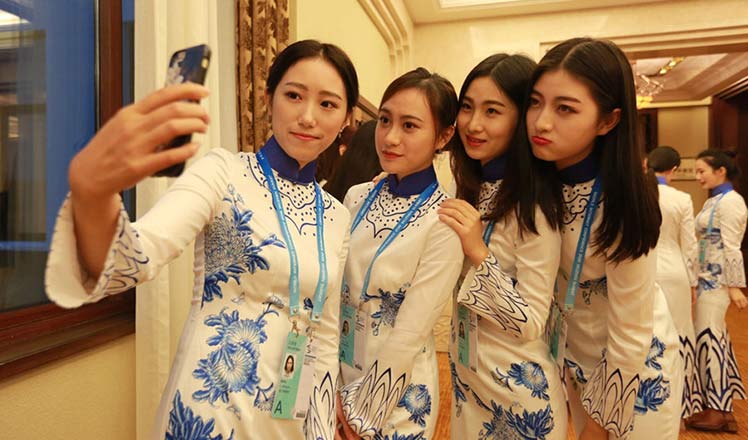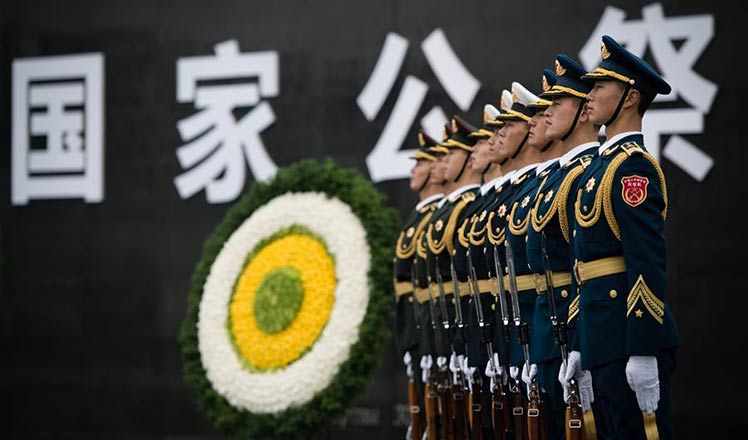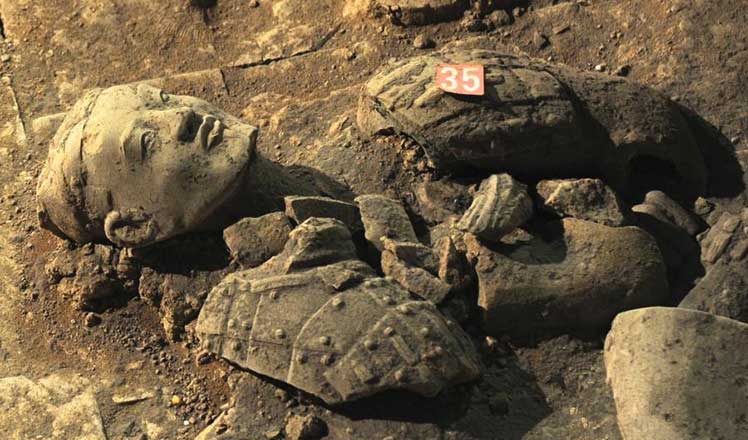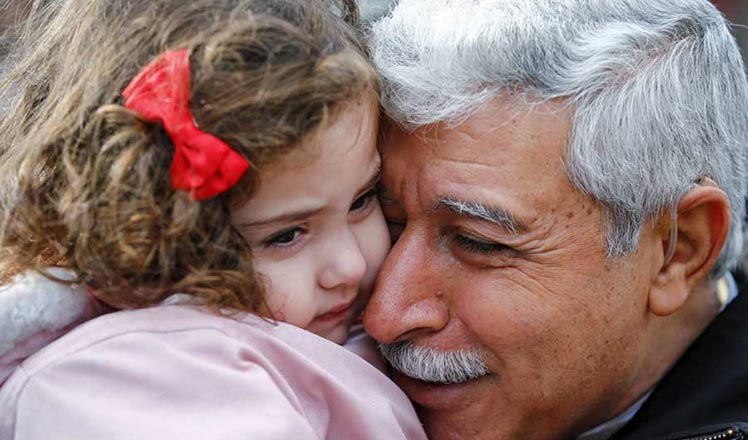Shanghai gets a glimpse of rare treasures
Updated: 2015-12-15 07:33
(China Daily)
|
||||||||
Patterns from Dunhuang have been adopted in the building of many landmark structures in China. Music and dance have been composed according to the images and historical documents from Dunhuang. She believes Dunhuang still has a lot to offer that will impact modern culture.
Unlike in Italy or France where great artworks were attributed to very famous artists, in Dunhuang the artists and craftsmen hardly left any personal record.
Guan Youhui, 83, a researcher who has worked in Dunhuang since 1954, says this was because the artists then earned poorly and had low social status.
Among the historical records in the grottoes, he once found a contract signed by a craftsman selling his son because of poverty.
"Nobody as they were, those ancient artists had great techniques and created masterpieces that have survived centuries," he says.
Dunhuang opened its grottoes to visitors in 1979. At the beginning, it received no more than 40,000 visitors a year, but this year 1.1 million people went to see the grottoes. This has brought lots of challenges in the protection of Dunhuang, Wang says.
In order to minimize the damage caused by large numbers of tourists, Dunhuang's authorities have imposed restrictions on visits to the grottoes, and a new reservation system is in place.
"Please remember to make a reservation online before you visit," says Fan.
"Otherwise you will have to wait in a long line, and be able to access only a few grottoes and open zones."
She also suggests visitors avoid the summer vacation and national holidays when the area is crowded.
If you go
10 am-6 pm, Tuesday-Sunday, until March 20, 2016
Shanghai Himalayas Museum, 3F, Zone A, Himalayas Center, 869 Yinghua Road, Pudong district, Shanghai
021-5033-9801
Related:
Tourists enjoy snow scenery in Dunhuang's desert
Replicas of China's Mogao Grottoes will visit the US in 2016
- Fidel Castro congratulates Venezuelan leader despite setback
- Merkel refuses cap on number of refugees
- Russia warns Turkey over Aegean warship incident
- Macri sworn in as Argentina's new president, calls for unity, dialogue
- Deals with Azerbaijan to boost Silk Road plan
- Outlook for strong El Nino maintains in US

 Student volunteers wear qipao for World Internet Conference
Student volunteers wear qipao for World Internet Conference
 China marks Memorial Day for Nanjing Massacre victims
China marks Memorial Day for Nanjing Massacre victims
 Six major archaeological discoveries in 2015
Six major archaeological discoveries in 2015
 Border defense soldiers attend training in heavy snow in Xinjiang
Border defense soldiers attend training in heavy snow in Xinjiang
 The world in photos: Nov 7-13
The world in photos: Nov 7-13
 Wuzhen gets smart with Second World Internet Conference
Wuzhen gets smart with Second World Internet Conference
 Historical photos reveal how Japan celebrated Nanjing invasion
Historical photos reveal how Japan celebrated Nanjing invasion
 How firemen put out oil tanker blaze within two hours
How firemen put out oil tanker blaze within two hours
Most Viewed
Editor's Picks

|

|

|

|

|

|
Today's Top News
Shooting rampage at US social services agency leaves 14 dead
Chinese bargain hunters are changing the retail game
Chinese president arrives in Turkey for G20 summit
Islamic State claims responsibility for Paris attacks
Obama, Netanyahu at White House seek to mend US-Israel ties
China, not Canada, is top US trade partner
Tu first Chinese to win Nobel Prize in Medicine
Huntsman says Sino-US relationship needs common goals
US Weekly

|

|







